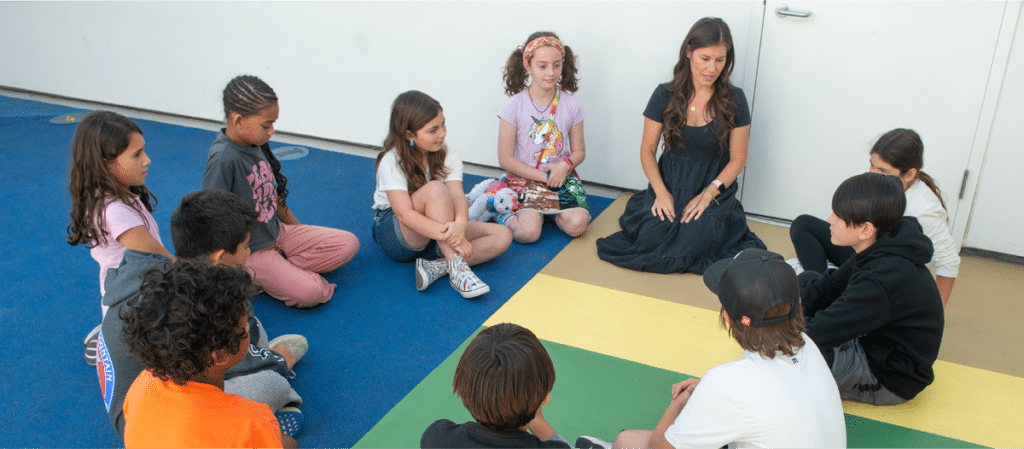
February is the shortest month of the year, but for educators it can feel like the longest. There is a lot to get done in the second half of the year, and often students returning from winter break need to be retaught classroom rules, routines, and expectations. But there is another important factor that can lead to classroom tension at this time of year: your students are no longer the same children you met at the beginning of the year. In fact, in almost every way—socially, emotionally, academically, and developmentally—they are moving closer to their next grade than the one they left behind at the beginning of the year. (For example, your third grade students are now more like fourth graders than second graders.) The strategies and practices you were using back in October will no longer meet their needs.
One of the main reasons educators proactively plan lessons and activities is to create an equitable and inclusive environment for all students in the learning community. Morning Meeting (for elementary school) and Responsive Advisory Meeting (for middle school) are a great place to start as you work to build an equitable and inclusive environment that meets your students where they are now. That’s because both practices provide a consistent time in the day for students to build, strengthen, and reinforce positive and inclusive communities:
Here are some ways you can leverage Morning Meeting or Responsive Advisory Meeting to build a positive classroom community in which all students feel a sense of significance and belonging.
One easy way to make students feel included is to give them a warm greeting that uses the name they prefer. Both practices offer a clear opportunity for these salutations: the greeting component in Morning Meeting and the welcome arrival component in Responsive Advisory Meeting. Watch out for the common pitfalls of giving students nicknames they didn’t request
(such as calling Michael “Mike”) or using terms of endearment (such as “honey”), and make sure to honor a student’s chosen name.
Both Morning Meeting and Responsive Advisory Meeting are set up to make students feel a sense of significance and belonging in their community. In Responsive Advisory Meeting, this process starts the moment the student walks through the door and is greeted by the teacher, while in Morning Meeting it begins once the teacher starts the meeting.
One element of Morning Meeting that creates an environment in which students can be seen and heard is the circle. When students sit in a circle, everyone is on equal footing. No one is at the head of the table or in a special seat, and, just as important, no one feels excluded. Students can physically see and be seen by every other student in the classroom.
For developmental reasons, creating these conditions will look different in Responsive Advisory Meeting. Middle school students might not immediately be comfortable looking and being looked at by peers, so it’s best to start off with assigned seats and let students get comfortable in the Advisory space before introducing activities that involve circling up.
It can seem like a small thing, but students notice when teachers use language in the morning message or announcements that doesn’t include them. For example, the phrase “boys and girls” might not include everyone in the classroom. Similarly, the term “friend” can make a student who is struggling to connect with peers feel excluded.
Instead, try something like “fifth graders” or “learners.” Or gear your message toward what your students are learning and practicing: call them “writers,” “readers,” or “mathematicians.” Whether it’s written in a message or spoken, any time you refer to the whole class, make sure everyone feels represented by the language you choose.
Morning Meeting and Responsive Advisory Meeting can act as great equalizers in the classroom because students get to choose the level at which they feel comfortable participating. For example, one student might be comfortable performing a special handshake during the greeting component of Morning Meeting, while another student might only be comfortable with a high-five, and still another student might prefer an air-five. Despite these variations, all three students are fully participating.
Furthermore, students do not need a background in these practices, or any prior knowledge or skill sets, to be successful. In fact, a new student can participate at whatever level they are at.
At this time of year, it is easy to feel so comfortable with the routine of Morning Meeting and Responsive Advisory Meeting that you forget the transformative power they can have for your students. As your students continue to develop by leaps and bounds, a great way to support them in their growth is to proactively plan Morning Meetings and Responsive Advisory Meetings to create a climate of inclusivity and equity.
Jane Cofie is the director of curriculum and instruction for Center for Responsive Schools and the author of the book Strengthening the Parent-Teacher Partnership.